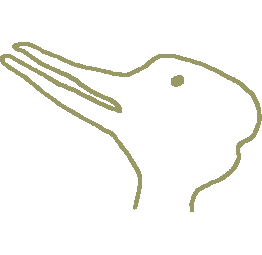 Author
Author
|
Topic: RE: virus:Studies Of Amazonian Languages Challenge Linguistic Theories (Read 792 times) |
|
Blunderov
Archon
    
Gender: 
Posts: 3160
Reputation: 8.66
Rate Blunderov

"We think in generalities, we live in details"
  
|
 |
RE: virus:Studies Of Amazonian Languages Challenge Linguistic Theories
« on: 2005-08-16 17:33:17 » |
 |
[Blunderov] A bit disconcerting for Chomskyites like me but that's science I suppose. Whatever this research may mean for theories about the origin of language, I thought it fascinating for other reasons too. I had, for instance, always assumed without realising it that any language could be translated into any other. And that all cultures had some sort of creation myth.
Best Regards
http://www.sciencedaily.com/releases/2005/08/050814165536.htm
Studies Of Amazonian Languages Challenge Linguistic Theories
Two studies that appear in the August/October 2005 issue of Current Anthropology challenge established linguistic theories regarding the language families of Amazonia.
New research by Dan Everett (University of Manchester) into the language of the Pirahã people of Amazonas, Brazil disputes two prominent linguistic ideas regarding grammar and translation. The Pirahã are intelligent, highly skilled hunters and fishers who speak a language remarkable for the complexity of its verb and sound systems. Yet, the Pirahã language and culture has several features that not known to exist in any other in the world and lacks features that have been assumed to be found in all human groups. The language does not have color words or grammatical devices for putting phrases inside other phrases. They do not have fiction or creation myths, and they have a lack of numbers and counting. Despite 200 years of contact, they have steadfastly refused to learn Portuguese or any other outside language. The unifying feature behind all of these characteristics is a cultural restriction against talking about things that extend beyond personal experience. This restriction counters claims of linguists, such as Noam Chomsky, that grammar is genetically driven system with universal features. Despite the absence of these allegedly universal features, the Pirahã communicate effectively with one another and coordinate simple tasks. Moreover, Pirahã suggests that it is not always possible to translate from one language to another.
In addition, Alf Hornborg's (Lund University) research into the Arawak language family counters the common interpretation that the geographical distribution of languages in Amazonia reflects the past migrations of the inhabitants. At the time of Christopher Columbus, the Arawak language family ranged from Cuba to Bolivia. Yet, geneticists have been unable to find significant correlations between genes and languages in the Amazonia. Moreover, Arawakan languages spoken in different areas show more similarities to their non-Arawakan neighbors than to each other, suggesting that they may derive from an early trade language. As well, Arawak languages are distributed along major rivers and coastlines that served as trade routes, and Arawak societies were dedicated to trade and intermarriage with other groups. But, the dispersed network of Arawak-speaking societies may have caused ethnic wedges between other, more consolidated language families with which they would have engaged in trade and warfare. Finally, there is increased evidence that language shifts were common occurrences among the peoples of Amazonia and were used as a way to signal a change in identity, particularly when entering into alliances, rather than migratory movement.
Sponsored by the Wenner-Gren Foundation for Anthropological Research, Current Anthropology is a transnational journal devoted to research on humankind, encompassing the full range of anthropological scholarship on human cultures and on the human and other primate species. Communicating across the subfields, the journal features papers in a wide variety of areas, including social, cultural, and physical anthropology as well as ethnology and ethnohistory, archaeology and prehistory, folklore, and linguistics. For more information, please see our website: www.journals.uchicago.edu/​CA
---
To unsubscribe from the Virus list go to <http://www.lucifer.com/cgi-bin/virus-l>
|
|
|
|
|
the.bricoleur
Archon
  
Posts: 341
Reputation: 8.30
Rate the.bricoleur

making sense of change
 
 
|
 |
RE: virus:Studies Of Amazonian Languages Challenge Linguistic Theories
« Reply #1 on: 2005-08-19 05:34:40 » |
 |
Does this really refute Chomsky? Is there not a question of whether the Piraha are incapable of, or have simply chosen not to communicate "about things that extend beyond personal experience"?
-- iolo
Quote from: Blunderov on 2005-08-16 17:33:17
[Blunderov] A bit disconcerting for Chomskyites like me but that's science I suppose. Whatever this research may mean for theories about the origin of language, I thought it fascinating for other reasons too. I had, for instance, always assumed without realising it that any language could be translated into any other. And that all cultures had some sort of creation myth.
Best Regards
http://www.sciencedaily.com/releases/2005/08/050814165536.htm
Studies Of Amazonian Languages Challenge Linguistic Theories
Two studies that appear in the August/October 2005 issue of Current Anthropology challenge established linguistic theories regarding the language families of Amazonia.
New research by Dan Everett (University of Manchester) into the language of the Pirahã people of Amazonas, Brazil disputes two prominent linguistic ideas regarding grammar and translation. The Pirahã are intelligent, highly skilled hunters and fishers who speak a language remarkable for the complexity of its verb and sound systems. Yet, the Pirahã language and culture has several features that not known to exist in any other in the world and lacks features that have been assumed to be found in all human groups. The language does not have color words or grammatical devices for putting phrases inside other phrases. They do not have fiction or creation myths, and they have a lack of numbers and counting. Despite 200 years of contact, they have steadfastly refused to learn Portuguese or any other outside language. The unifying feature behind all of these characteristics is a cultural restriction against talking about things that extend beyond personal experience. This restriction counters claims of linguists, such as Noam Chomsky, that grammar is genetically driven system with universal features. Despite the absence of these allegedly universal features, the Pirahã communicate effectively with one another and coordinate simple tasks. Moreover, Pirahã suggests that it is not always possible to translate from one language to another.
In addition, Alf Hornborg's (Lund University) research into the Arawak language family counters the common interpretation that the geographical distribution of languages in Amazonia reflects the past migrations of the inhabitants. At the time of Christopher Columbus, the Arawak language family ranged from Cuba to Bolivia. Yet, geneticists have been unable to find significant correlations between genes and languages in the Amazonia. Moreover, Arawakan languages spoken in different areas show more similarities to their non-Arawakan neighbors than to each other, suggesting that they may derive from an early trade language. As well, Arawak languages are distributed along major rivers and coastlines that served as trade routes, and Arawak societies were dedicated to trade and intermarriage with other groups. But, the dispersed network of Arawak-speaking societies may have caused ethnic wedges between other, more consolidated language families with which they would have engaged in trade and warfare. Finally, there is increased evidence that language shifts were common occurrences among the peoples of Amazonia and were used as a way to signal a change in identity, particularly when entering into alliances, rather than migratory movement.
Sponsored by the Wenner-Gren Foundation for Anthropological Research, Current Anthropology is a transnational journal devoted to research on humankind, encompassing the full range of anthropological scholarship on human cultures and on the human and other primate species. Communicating across the subfields, the journal features papers in a wide variety of areas, including social, cultural, and physical anthropology as well as ethnology and ethnohistory, archaeology and prehistory, folklore, and linguistics. For more information, please see our website: www.journals.uchicago.edu/​CA
---
To unsubscribe from the Virus list go to <http://www.lucifer.com/cgi-bin/virus-l>
|
|
|
|
|
|
|
|
|




